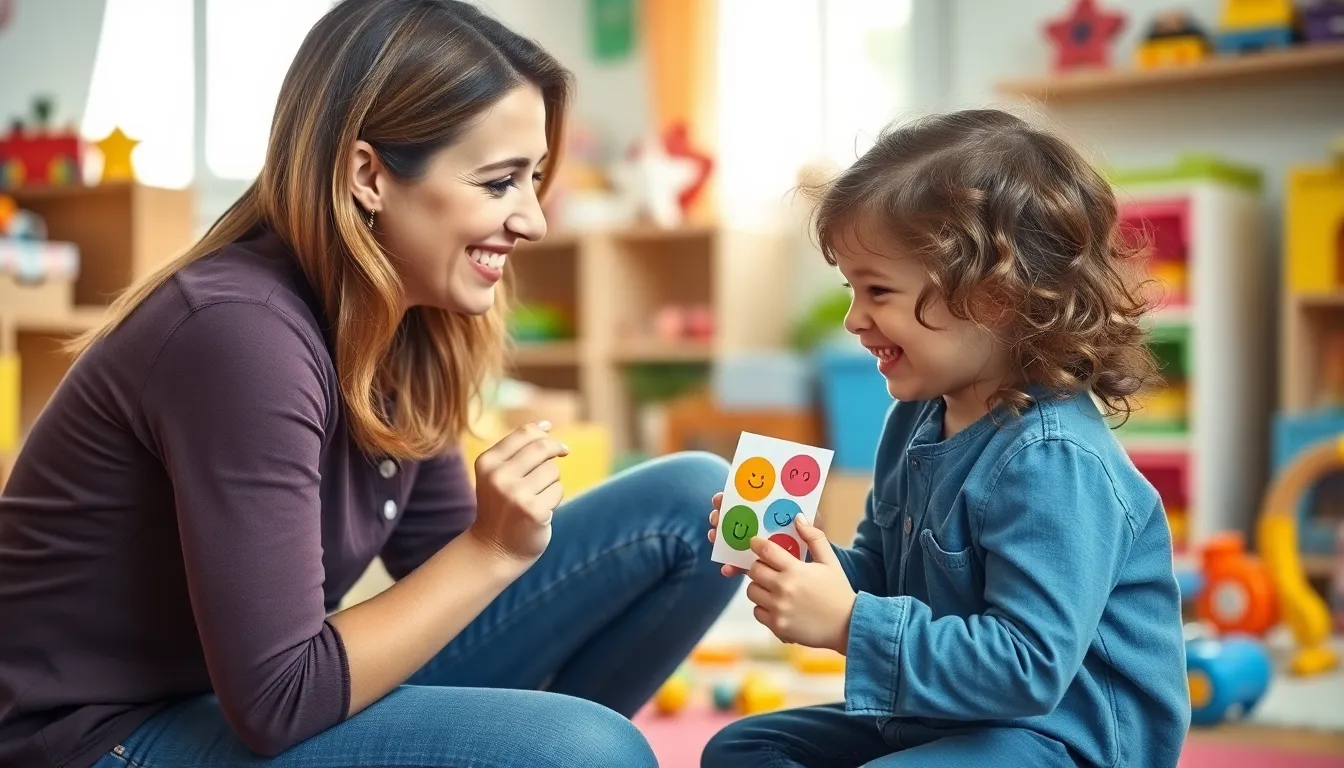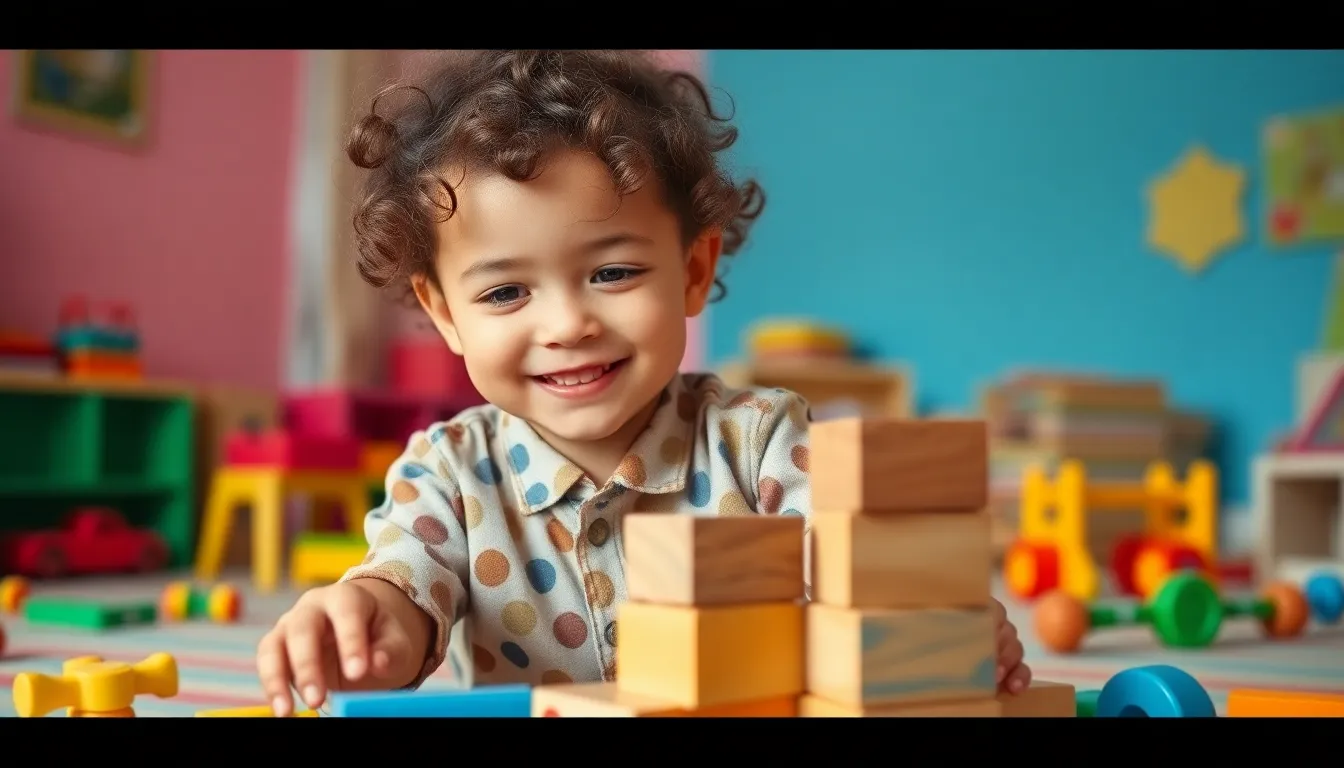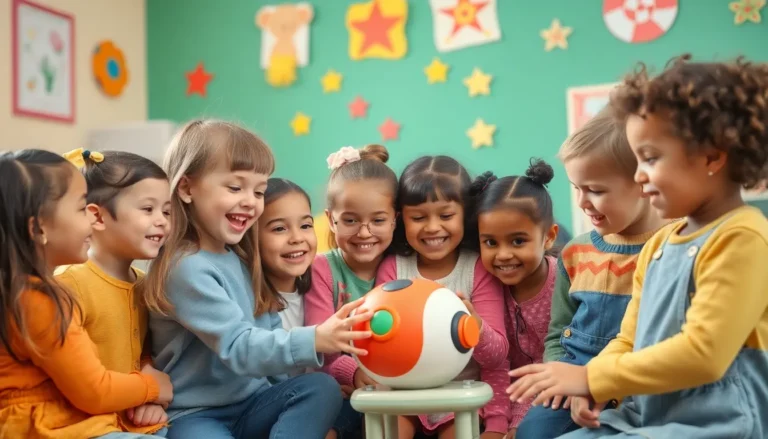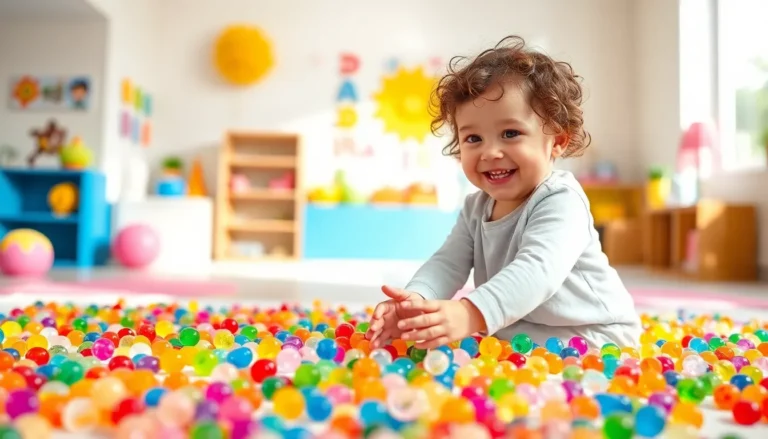Table of Contents
ToggleNavigating the wild world of toddler discipline can feel like trying to tame a tiny tornado. One moment, they’re your sweet little angel, and the next, they’re throwing a full-blown tantrum over the color of their cereal. With so many strategies out there, it’s easy to feel overwhelmed. But fear not—effective discipline doesn’t have to be a battle of wills.
Understanding Toddler Discipline Strategies
Effective discipline fosters a child’s growth and aids in developing essential life skills. Recognizing the fundamental role of discipline in early childhood builds the foundation for future behavior.
Importance of Discipline in Early Childhood
Discipline teaches toddlers about boundaries and expectations. Structure and consistency guide behaviors, helping them understand right from wrong. Growth occurs through learning how actions influence outcomes. Encouraging positive behavior nurtures self-control and responsibility, which are vital skills. Parents and caregivers influence emotional regulation, essential for managing feelings. Establishing routines reinforces expectations, making it easier for toddlers to navigate daily life.
Common Challenges in Toddler Discipline
Managing a toddler’s unpredictable behaviors poses challenges. Tantrums often arise from frustration when they lack verbal skills to express feelings. Limited attention spans make it difficult to maintain focus during discussions about behavior. Parents may struggle with their own reactions, impacting the effectiveness of discipline. External factors, such as stress and fatigue, can increase parenting difficulties. Social dynamics, including sibling rivalry, complicate discipline strategies as well.
Positive Reinforcement Techniques

Positive reinforcement serves as an effective method for promoting desired behaviors in toddlers. By recognizing and rewarding positive actions, caregivers create an encouraging environment.
Praise and Rewards
Giving praise helps reinforce good behavior. Specific praise, such as “You did a great job sharing your toys,” provides clarity on what behavior is being rewarded. Rewards can come in various forms, including stickers, extra playtime, or a favorite snack. Additionally, immediate reinforcement links the behavior to the reward, making it more effective. When toddlers experience positive feedback, they often repeat those behaviors, strengthening their understanding of expectations. Consistent reinforcement ensures they know which actions lead to praise.
Building Good Behavior Habits
Establishing habits involves regular reinforcement of positive behaviors. Setting clear expectations helps toddlers understand what behaviors to adopt daily. Repeating desired actions during routines solidifies these habits. For example, encouraging toddlers to say “please” and “thank you” consistently fosters politeness. Using role-playing scenarios can illustrate these behaviors effectively. Daily reminders and gentle corrections contribute to their ongoing development. Over time, toddlers explore and adopt good behavior as natural parts of their interactions.
Time-Out Methods
Time-out serves as a common discipline strategy for toddlers. This method allows children to reflect on their behavior in a calm environment.
Effective Implementation of Time-Out
Effective implementation of time-out requires consistency and clarity. Create a designated time-out area that’s quiet and free from distractions. When a toddler misbehaves, calmly explain the reason for the time-out. Consistently enforce a short duration, usually one minute per year of age. After the time-out, encourage a conversation about what happened and how to make better choices. This approach links consequences with behavior, reinforcing learning.
Alternatives to Time-Out
Alternatives to time-out exist for fostering discipline without isolation. Consider redirection as a primary strategy. When a child acts out, redirect their attention to a different activity. Allow them to express feelings through words, modeling appropriate communication. Setting clear expectations helps guide behavior. Engaging toddlers in problem-solving encourages them to take ownership of their actions. Offering choices empowers them to feel in control, reducing the likelihood of tantrums.
Setting Clear Boundaries
Setting clear boundaries is essential for effective toddler discipline. Establishing rules helps toddlers understand expectations and develop self-control.
Establishing Rules and Consequences
Defining specific rules gives toddlers a clear framework for acceptable behavior. Rules should be simple, like “no hitting” or “we share our toys.” Consequences need to be outlined so toddlers understand their actions’ impact. For instance, if a rule gets broken, a logical consequence, such as losing a toy for a brief period, reinforces the lesson. Consistency in applying rules allows toddlers to grasp the connection between behavior and outcomes. Effective communication about rules, along with regular reminders, supports adherence to these boundaries.
Consistency in Enforcement
Enforcing rules consistently ensures toddlers see the same message repeatedly. Immediate responses to rule violations prevent confusion. For example, if a toddler throws a toy, the parent should respond with the same consequence each time. Predictability helps toddlers learn the behaviors that receive positive or negative feedback. Adults should also involve themselves in discussions about rules, allowing toddlers to voice their feelings and concerns. Consistent enforcement strengthens understanding, which ultimately leads to better behavioral choices.
Redirecting Negative Behaviors
Redirecting negative behaviors involves understanding triggers and providing alternatives. Recognizing what sparks a toddler’s undesirable actions significantly aids in conflict resolution.
Understanding Triggers and Responses
Triggers often stem from frustration, fatigue, or overstimulation. Toddlers display heightened emotions in challenging situations, resulting in meltdowns. Identifying these triggers allows caregivers to anticipate negative responses. Noticing patterns in behavior helps in adjusting environments or routines. Effective responses include acknowledging feelings while offering reassurance. Enduring repeated incidents aids in refining strategies, creating a calmer atmosphere. Observing a child’s reactions equips caregivers with insights into emotional regulation techniques.
Offering Positive Alternatives
Offering positive alternatives encourages toddlers to express themselves appropriately. Instead of scolding during a negative outburst, suggest acceptable outlets for emotions. Engaging toddlers in different activities diverts attention from frustration. Simple choices, like swapping toys or changing scenery, prompt cooperation. Providing options fosters decision-making skills while minimizing tantrums. Role-playing scenarios prepares toddlers for real-life encounters, teaching valuable skills. Encouraging sharing or collaborative play nurtures social interactions. Responses centered around guidance help build a supportive learning environment.
Effective toddler discipline is a journey that requires patience and understanding. By implementing consistent strategies such as positive reinforcement and clear boundaries, caregivers can create a nurturing environment that encourages growth. Recognizing triggers and redirecting negative behaviors further supports toddlers in developing self-control and decision-making skills.
Establishing routines and expectations lays the foundation for healthy behavior patterns. With time and dedication, caregivers can navigate the challenges of toddler discipline, fostering essential life skills that will benefit children as they grow. Embracing these strategies not only aids in managing behavior but also strengthens the bond between caregivers and toddlers, paving the way for a harmonious relationship.








